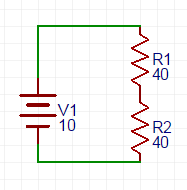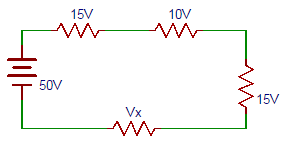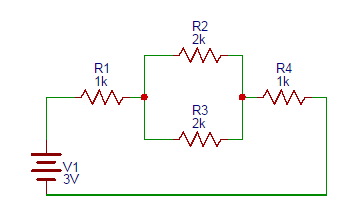This set of Network Theory Multiple Choice Questions & Answers (MCQs) focuses on “Circuit Elements and Kirchhoff’s Laws”.
1. Potential difference in electrical terminology is known as?
a) Voltage
b) Current
c) Resistance
d) Conductance
View Answer
Explanation: Potential difference in electrical terminology is known as Voltage and is denoted either by V or v. It is expressed in terms of energy per unit charge.
2. The circuit in which current has a complete path to flow is called ______ circuit.
a) short
b) open
c) closed
d) open loop
View Answer
Explanation: The circuit in which current has a complete path to flow is called a closed circuit. When the current path is broken so that current cannot flow, the circuit is called an open circuit.
3. If the voltage-current characteristics is a straight line through the origin, then the element is said to be?
a) Linear element
b) Non-linear element
c) Unilateral element
d) Bilateral element
View Answer
Explanation: If the voltage-current characteristic is a straight line through the origin, then the element is said to be Linear element. The difference in potential energy of charges is called Potential difference.
4. The voltage across R1 resistor in the circuit shown below is?

a) 10
b) 5
c) 2.5
d) 1.25
View Answer
Explanation: According to voltage divider rule, 10v is divide equally across resistors R1 and R2. So the voltage across R1 will be 5v.
5. The energy stored in the inductor is?
a) Li²/4
b) Li²/2
c) Li²
d) Li²/8
View Answer
Explanation: The energy stored in the inductor the area under the power of the inductor and is given by W = ʃpdt = ʃLidi = Li²/2.
6. How many types of dependent or controlled sources are there?
a) 1
b) 2
c) 3
d) 4
View Answer
Explanation: There are 4 dependent or controlled sources. They are VCVS(Voltage Controlled Voltage Source), VCCS(Voltage Controlled Current Source, CCVS(Current Controlled Voltage Source, CCCS(Current Controlled Current Source).
7. Find the voltage Vx in the given circuit.

a) 10
b) 20
c) 30
d) 40
View Answer
Explanation: From the circuit applying Kirchhoff’s voltage law, we can write 50 = 15 + 10 + 15 + Vx => Vx = 10V.
8. If the resistances 1Ω, 2Ω, 3Ω, 4Ω are parallel, then the equivalent resistance is?
a) 0.46Ω
b) 0.48Ω
c) 0.5Ω
d) 0.52Ω
View Answer
Explanation: The equivalent resistance 1/Rt = (1/R1)+(1/R2)+(1/R3)+(1/R4). And R1, R2, R3, R4 are 1Ω, 2Ω, 3Ω, 4Ω respectively. => Rt = 0.48Ω.
9. Find total current(mA) in the circuit.

a) 1
b) 2
c) 3
d) 4
View Answer
Explanation: R2 is parallel to R3. So equivalent resistance of R2 and R3 is 1K. The total resistance in the circuit is (1+1+1)K = 3K.Current in the circuit is 3V/3KΩ = 1mA.
10. If the resistances 3Ω, 5Ω, 7Ω, 9Ω are in series, then their equivalent resistance(Ω) is?
a) 9
b) 20
c) 24
d) 32
View Answer
Explanation: If the resistances are in series, then equivalent resistance is the sum of all the resistances that are in series. Equivalent resistance is (3+5+7+9)Ω = 24Ω.
Sanfoundry Global Education & Learning Series – Network Theory.
To practice all areas of Network Theory, here is complete set of 1000+ Multiple Choice Questions and Answers.
If you find a mistake in question / option / answer, kindly take a screenshot and email to [email protected]
